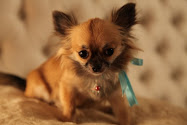


In his own eyes, Jean Cocteau was not a filmmaker.
Of course, he was a filmmaker as well as a dramatist, novelist, poet, painter, decorator, boxing promoter, essayist, librettist, journalist, and full-time celebrity.
His three great films of the fantastic – Le Sang d'un poète,
La Belle et la Bête and Orphée – remain central to his visual legacy,
yet Cocteau always insisted that in the field of film he was an amateur.
La Belle et la Bête is based on the famous children's story by Madame Leprince de Beaumont. In it, Cocteau combined mythical narrative, visual poetry, cinematic trickery.
For example, when Belle first walks through the main hall of Bête's castle,
the film cuts to close-ups of candelabras lighting themselves as she walks past.
Cocteau's use of reverse motion serves the contextual purpose
of emphasising the magical atmosphere of Bête's castle.






























